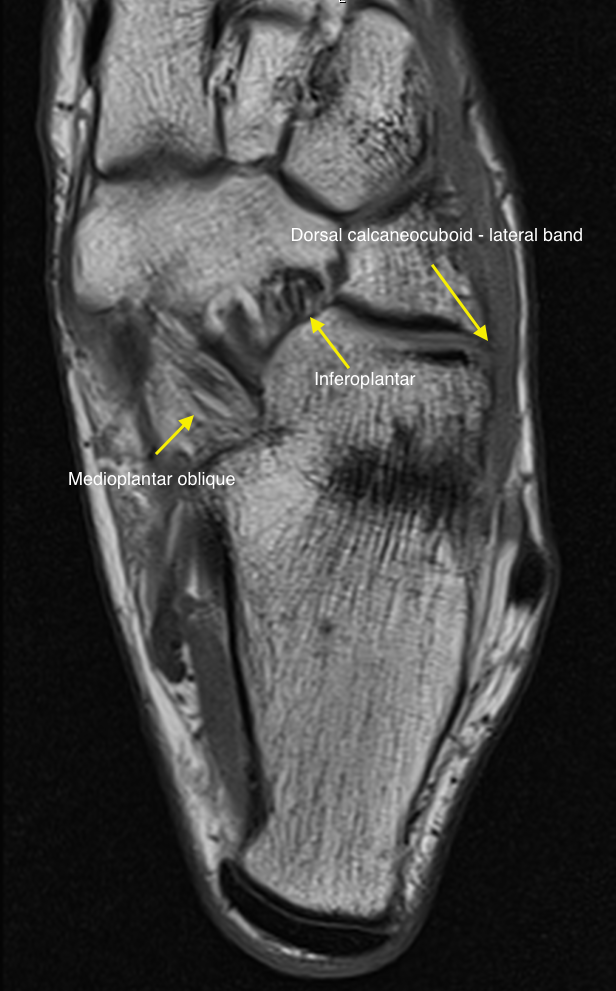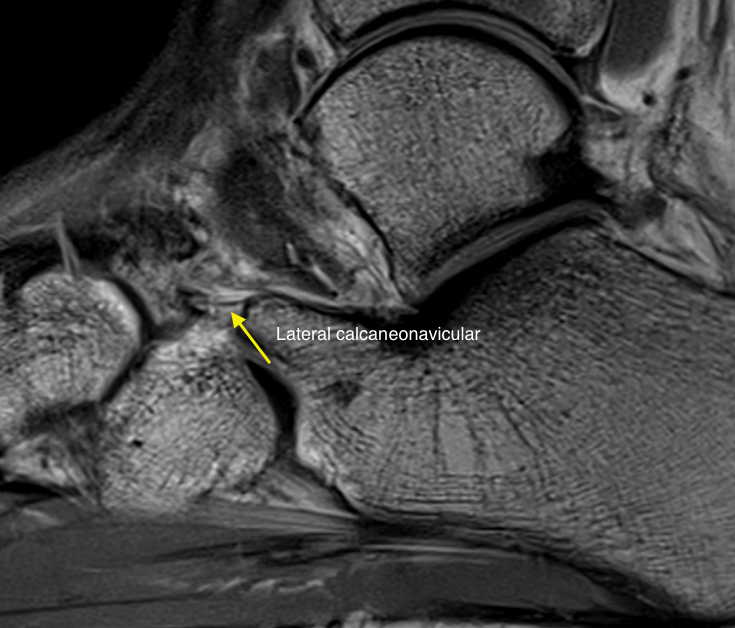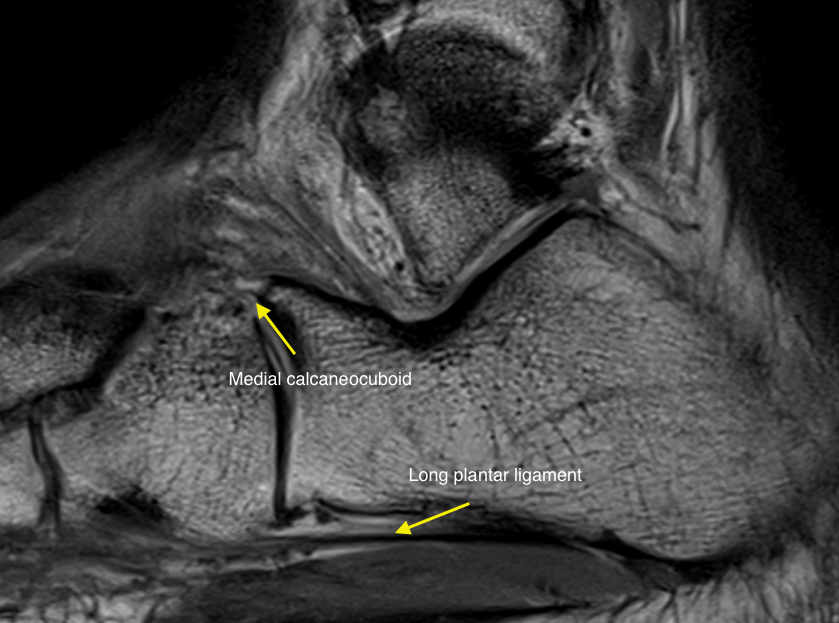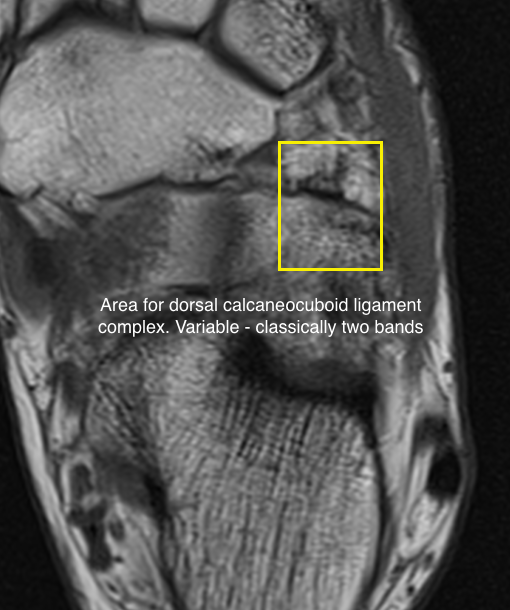This group comprises two articulations (TCNJ & CCJ) and their supporting ligaments
The main ligaments are the : Spring, Bifurcate, Plantar (long and short). Minor ligaments are the dorsal CC (usually paired band) and TN ligament.
Injuries can be ligamentous or avulsion fractures.
Inversion type injuries more common than eversion type
A third associated with lateral ligament complex injuries at the ankle
Also divided into medial column and lateral column injuries
The Cyma Line is a plain film line that defines the normal contours of the Chopart joint
Inversion type injuries result in medial impaction and lateral distraction. There is often associated plantar flexion, leading to:
• bifurcate ligament injury
• ED Brevis avulsion
• Talar head and navicular contusion
• Dorsal TN ligament injury/avulsion
• Torn CC capsule +/- avulsion fracture from CC joint margins
Eversion type (nutcracker) injuries are less common and include:
• Anterior process fracture
• Posterolateral cuboid fracture
• Navicular tuberosity avulsion
• Impaction at CC joint
There is a complex arrangement of ligaments around the base of the 1st and 2nd tarsometatarsal joint. Three layers are recognised, dorsal, interosseous and plantar. The strongest is in the interosseous layer that passes between the medial cuneiforms and base of the 2nd metatarsal. This is the Lisfranc ligament. There is also a strong ligament on the plantar aspect of these articulations with a Y-shaped configuration. Its base is on the medial cuneiform and one limb each inserting into the bases of the 2nd and 3rd metatarsals.
The commonest cause of injury is heavy impaction on the dorsal aspect of the foot either from a load being dropped or the wheel of a car running over the mid foot. This form of injury to the Lisfranc ligament and tarsal metatarsal joint are classified according to Myerson.
• Type A injury is complete subluxation of TMTJ in the same direction.
• Type B1 involves displacement of the first ray,
• B2 of the lateral four rays.
• Type C1 is a diverging pattern with partial subluxation and
• C2 diverging with total subluxation.
.
Has two components.
The lateral portion is the medial calcaneocuboid ligament, which lies on the superior aspect of the cuboid.
Medial is the dorsolateral calcaneocuboid ligament
The proximal insertion of the ligament is on the anterior process of the os calcis.
Injuries are generally caused by inversion of the mid-foot.
May have associated fractures of the anterior process
Also be associated with fractures of the base of the fifth metatarsal.
A short ligament that reinforces the capsule on the dorsal aspect of the talonavicular joint
Its lateral relationship is with the medial limb of the bifurcate ligament.
The spring ligament lies in its medial aspect.
Enthesopathy of the talonavicular ligament is reported in footballers secondary to chronic impaction.
Increase thickening, loss of reflectivity and increased doppler activity are the characteristic features.
The differential diagnosis is a stress fracture of the navicular.




